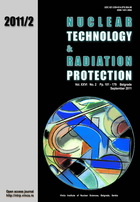
STATISTICAL TREATMENT OF NUCLEAR COUNTING RESULTS

Vol. XXVI, No. 2, Pp. 101-179
September 2011
UDC 621.039+614.876:504.06 ISSN 1451-3994
Pages: 164-170
Authors: Ćemal B. Dolićanin, Koviljka Dj. Stanković , Diana Ć. Dolićanin,
and Boris B. Lončar
AbstractSince the exact time a specific nucleus undergoes radioactive decay cannot be specified, nor can showers caused by secondary cosmic rays be predicted, statistical laws play an important role in almost all cases of experimental nuclear physics. This paper describes the method for the statistical treatment of nuclear counting results obtained experimentally by taking into account random variables pertaining to both frequent and infrequent phenomena. When processing counting measurement data, it is recommended to first discard spurious random variables that spoil the statistics by using Chauvenet’s criterion, as well as to test if the results in the statistical sample follow a unique statistical distribution by using the Wilcoxon rank-sum test (U-test). The verification of the suggested statistical method was performed on counting statistics obtained both from the radioactive source Cs-137 and background radiation, ex- pected to follow the normal distribution and the Poisson distribution, respectively. Results show that the application of the proposed statistical method excludes random fluctuations of the radioactive source or of the background radiation from the total statistical sample, as well as possible inadequacies in the experimental set-up and show an extremely effective agreement of the theoretical distribution of random variables with the corresponding experimentally obtanied random variables.
Key words: counting statistics, Chauvenet’s criterion, U-test
FULL PAPER IN PDF FORMAT ( 505 KB)